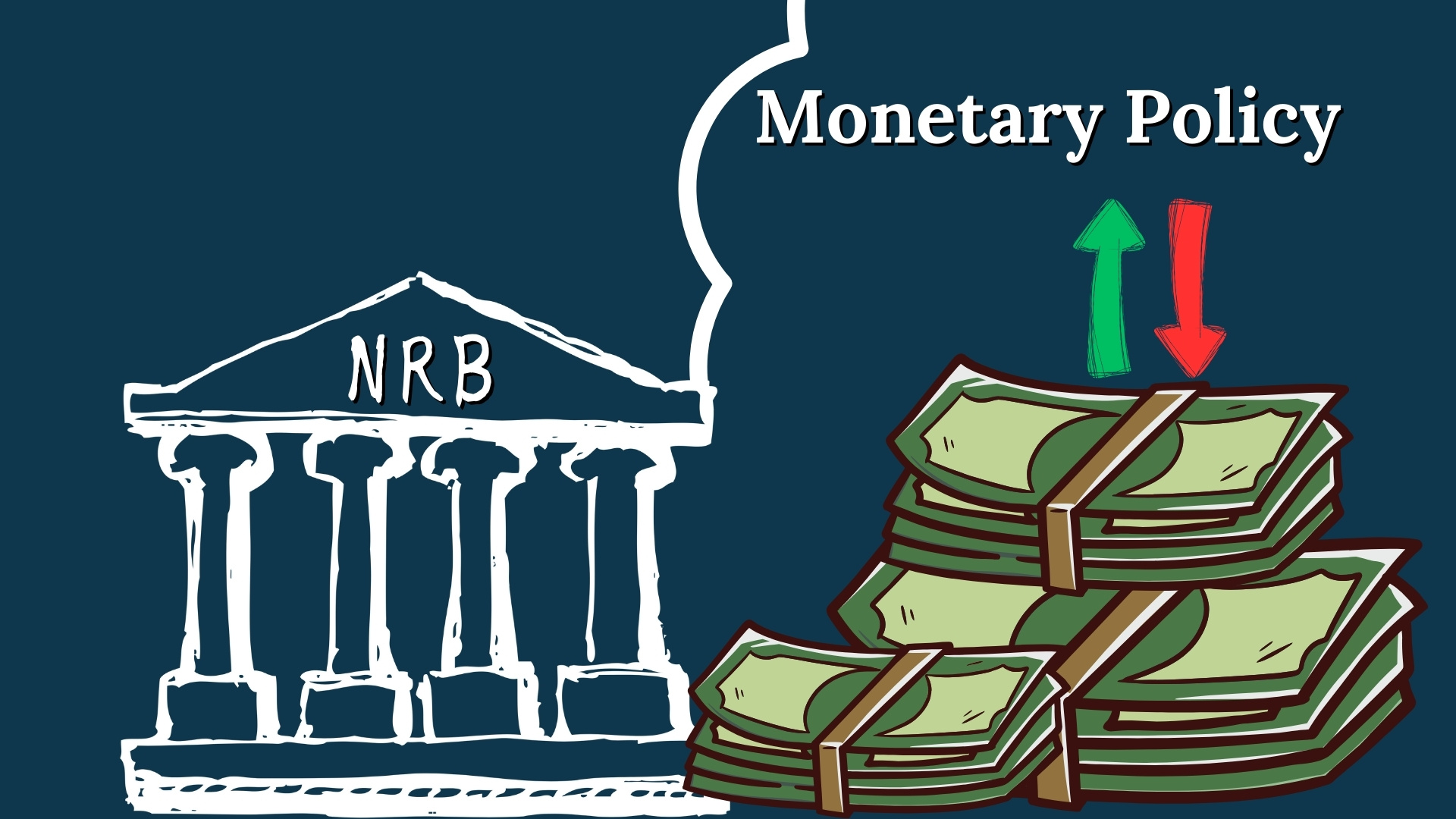Monetary policy | Expansionary | Micro finance institutions | Policy rate

The Nepal Rastra Bank (NRB) had taken an expansionary monetary policy for this fiscal year, which was released on 26th July last year. After seven months of assessment (mid-term review), the NRB found no need to alter its stance.
Accordingly, the monetary policy has kept its existing policy rate of 5% unchanged, along with the deposit collection rate at 3%, and the bank rate at 6.5%.
The central bank decided to uphold its expansionary policy despite inflationary pressures. It reported only a slight decline in inflation, which dropped to 4.97% compared to the same period last year. But food inflation has gone up by 7.53% while the prices of vegetables (according to the six month data released by the NRB a while ago) have been razor sharp increasing by a staggering 28.52%. The extent of the money supply contributing to the trend in food prices remains unclear.
“Although recent inflation trends suggest a need to raise the policy rate, maintaining a cautiously flexible approach in monetary policy remains a high priority to stimulate economic activity,” says the review released by the governor Maha Prasad Adhikari whose five year tenure will be ending in a month period. The review has also left the Cash Reserve Ratio and Statutory Liquidity Ratio unchanged.
In the seven month period, the financial regulator absorbed net liquidity of NRs 14,861.55 trillion [through deposit collection and standing liquidity facility] compared to 27.94 billion in the corresponding period last year, says the NRB. While credit to the private sector grew by an additional 265.56 billion rupees compared to 192.64 billion last fiscal year. These figures show a tremendous gap in the liquidity presently available in the system and credit demand.
The soon-to-be-outgoing governor has however made two crucial policy changes in light of the current economic situation: i) reduced the provision rate for pass loans to 1% from 1.1% and ii) reduced the loan-to-value ratio for electric vehicles (EVs) from 80% to 60%.
The first revision will help banks and financial institutions (BFIs) register higher profits, which have faced setbacks in the last two quarters.
Now the banks will have to set aside 0.1% less as provision amount from the previous 1.1% [which was 1.2% last fiscal year] for ‘pass’ loans—which are loans with only one month overdue. This reduction in provisioning will allow them to report higher operational profits while also providing cushion for BFIs facing strain on their capital funds.
The share market appears to have welcomed the step, as the NEPSE index gained 49.15 points (1.77%) yesterday, which was the market’s first day of trading following the release of the review on Tuesday while the banking subindex rose by 46 points (3.32%).
In another unanticipated move, the central bank has tightened EV financing. BFIs are now allowed to finance only 60% of the loan amount for EVs while the borrowers will have to shell out the remaining 40% on their own, which was earlier 20%.
This move aims to curb the rising imports of EVs into the cash-strapped country, where expensive medium-end models are proliferating, further straining the treasury due to the tax incentives they benefit from. The country imported EVs amounting to NRs 14.7 billion this seven year raising a tax revenue of 9.08 billion rupees.
The move also signals that EVs may not receive the same tax incentives in the country's next fiscal policy.
After the EV financing was announced this week, the Nepal Automobile Dealers’ Association (NADA), which has been advocating for loan-to-value of 80%, was quick to express its dissatisfaction citing that the NRB review undermines the government’s commitments to clean energy.
On the other hand, the review has raised the loan-to-value ratio for internal combustion engine (ICE) vehicles to 60% up from the current 50%. NADA welcomed this move, though. Borrowers will now be required to pay a down payment of 60% on both EV and ICE engine vehicles.
Additionally, the bank has increased the Non-Deliverable Forward (NDF) limit from 15% to 20% to ensure banks enhanced capability to handle exchange rate fluctuations.
Non-Deliverable Forward (NDF) contract is an exchange rate hedging instrument — in which two parties agree on the future exchange rate of currency. Despite the fluctuation in the currency, the difference must be paid in US Dollar.
Further, starting from Jestha this fiscal year, the loan interest rates of Microfinance Institutions (MFIs) will now be linked to their base rates, following the same approach applied to the BFIs. Earlier, their interest rate was capped at 15%, a limit that the NRB decided to review during the implementation of this year’s monetary policy.
Earlier, Governor Adhikari released an expansionary monetary policy this year, which included lowering benchmark interest rates, eliminating the Rs 200 million margin loan cap for institutional investors, and reducing provisioning requirements for banks, among other measures.
Read More Stories
Kathmandu’s decay: From glorious past to ominous future
Kathmandu: The legend and the legacy Legend about Kathmandus evolution holds that the...
Kathmandu - A crumbling valley!
Valleys and cities should be young, vibrant, inspiring and full of hopes with...
Consumer Court rulings spark nationwide doctors’ strike
Doctors across Nepal suspended all non-emergency medical services on Monday in protest against...